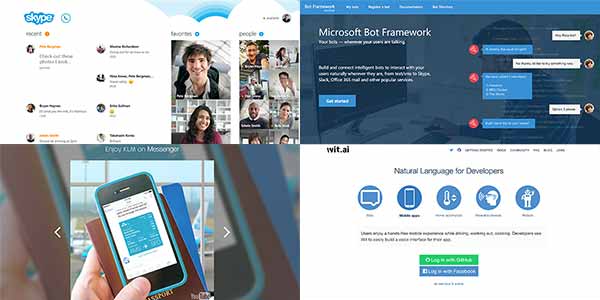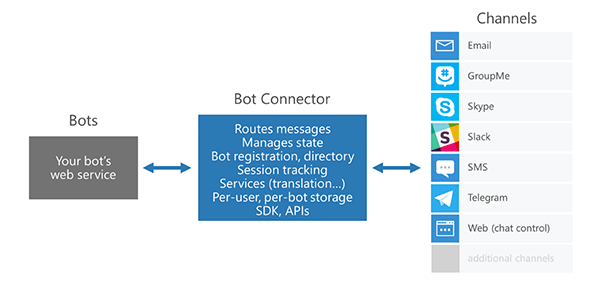
Apps may have been all the rage in recent years, but suddenly everyone is talking about “bots” and their potential impact on customer experiences. The technology has the ability to pro-actively converse with people, therefore presenting companies with the opportunity to offer automated but natural, human-like conversation with their customers. In the travel and air transport sectors, bots clearly carry a huge amount of potential.
The most compelling example to date in this industry is perhaps KLM’s use of Facebook Messenger to interact directly with its customers. Since last month, the carrier has offered its passengers booking and check-in confirmation, boarding pass and flight status updates via Facebook Messenger, making the information easy to find in a single place, so it is available at the airport, en route or at home. If passengers have any questions, they can quickly contact KLM’s social media service agents directly via Messenger. This service has been enabled by the creation by KLM of a bespoke bot, or chatbot, for the Messenger platform.
In recent weeks, a number of technology giants have made big announcements in this space. Facebook has launched its “Bot Engine” and Microsoft has unveiled its own “Bot Framework”, which enables developers to build and connect intelligent bots to interact with users naturally wherever they are via various channels, including SMS, Skype, Slack and other services.
Bots as an enabler for conversational interaction
While bots have existed for years, now is an exciting time for the technology because it has finally been “democratised”, according to Fred Warren, Creative Director, Connected Digital Services, Microsoft. He told FTE: “Up until now most of the work in this area, certainly around machine learning and things like that, have been very niche and specialist, and they’ve required dedicated teams to develop each individual one. With the adoption of the cloud and the capabilities that exist in the cloud, this actually starts to democratise a lot of these capabilities. More people can now start to explore and look at how these capabilities work.

“The Bot Framework makes it easier for people to deploy conversational assistance, for instance, within their business. But it’s less about the Bot Framework and actually about the Bot Framework interacting with things like Microsoft Azure, which is our cloud platform, things like our machine learning platform, things like Azure Logic Apps…it’s that connection into this wider group of services and micro services that actually makes a massive difference,” said Warren, who will address FTE Europe 2016 delegates in a joint keynote with Virgin Atlantic.
So how can this benefit airlines and their partners? Warren provided two examples. Firstly, if you are on a conference call and you need immediate information on visa requirements for an upcoming trip, for instance, you could log onto Skype and ask a bot about the visa requirements at the destination country. This bot will then respond immediately with the relevant information.
The second example focused on lost baggage. “At the moment if the airline loses my bag I go to the airline desk, I register and tell them what happened, and they say: ‘OK go to this website and type in this number’. And I go and sit and hit F5 on that website every hour to see where my baggage is. So they (airlines) have kind of got the workflow done, they’ve got the process in place, they’ve got the hand-offs between the different agents in place, but instead of having to download an app or go to a website to track this, why can’t I just get on Skype and say ‘Can you let me know where my bag is?’ or even for that bot to reach out to me and say ‘Hi, by the way, here’s the latest progress’. Instead of having some big application and lots and lots of lines of code, actually what I can do is tie a bot to something like a Logic App and it will handle that scenario for me on my terms.” Skype, Warren said, is just one example – the customer could choose to have this interaction via SMS, Slack or many other digital channels.
He continued: “The interaction is conversational, so it’s you meeting your customers on their terms. People have been saying this is the ideal place we want to get to. Now you can do it. You don’t have to have a massive machine learning arm behind you – you can now tap into a cloud service and actually prototype and try these things.”
Apps or bots?
FTE couldn’t help but wonder what all of this means for airlines, airports and various other players in the air transport and travel industry sectors that have invested significant amounts of time, effort, resource and money into creating a high-end app based on the thinking that it will provide the perfect communication platform with their customers? “I kind of disagree with the apps view,” Warren said. “I wouldn’t quite say you need a high-end differentiating app, and certainly some of the insight that we’ll share in the talk we’re going to give at FTE Europe will explain why we think differently, why we think that’s not necessarily the right approach.
“At the end of the day, it’s about meeting the customer on the terms they’re used to. If they’re used to an app then great, fine, go for it. But then from a pure technology point of view, how do I make sure that I can manage myriad different interaction points very simply and very cost-effectively? Having things like services that sit in the cloud that then I can tap into on these different channels actually helps simplify how I’m going to engage with them and it helps lower the costs of that engagement as well. Customers benefit if they still maintain or grow that variety of interaction points, but the airlines benefit because it’s costing them less to do that.”
So, if it was, according to some companies at least, all about apps in the past, is it all about bots today? “It’s not just about the bot,” Warren explained. “It’s about the fact that the bot is existing in this ecosystem of other services and micro-services, and it’s the ability for airlines, companies or independent solution vendors to be able to actually create these different experiences very quickly, and deploy them very quickly to their customers in terms and interaction points that people are used to. That for me is the really interesting thing. Seeing what people are actually going to create with this stuff is really amazing.”
Apps have been used as a key customer experience tool in recent years and now it seems that bots have the potential to take the personalised conversation to the next level. KLM has emerged as a first-mover, but you can expect many others to follow suit in the coming months.







